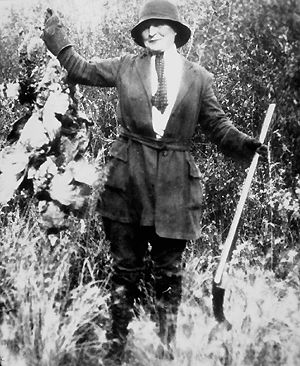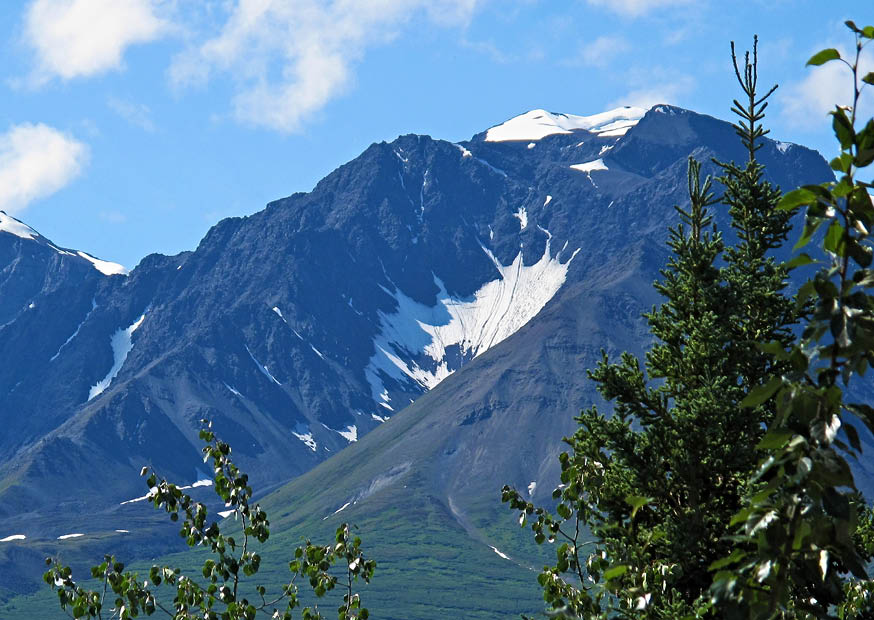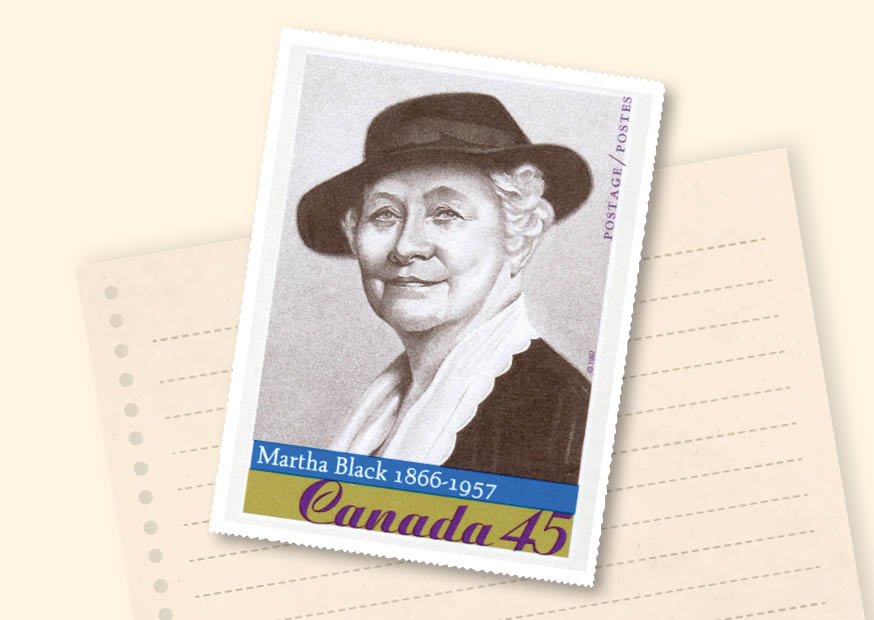Martha Louise Black was a Canadian naturalist and politician who immigrated to Canada during the Klondike Gold Rush, leaving a comfortable life in Chicago to trek over the Chilkoot Trail to Dawson City with her brother and cousin. Although they didn’t find any gold in the hills of the Klondike, Martha didn’t join the mass exodus of prospectors after those first crazy years.
A decorated life ring from the Canadian Coast Guard ship Martha Louise Black (YTM collection, accession number 1993.4.3)
She carved out a life for herself after the Gold Rush, marrying lawyer (and later politician and territorial Commissioner) George Black and settling down in Dawson. In 1935, she was elected to George’s former seat in the federal riding of Yukon, becoming the second woman, after Agnes Macphail, to sit in the Canadian House of Commons. In her memoirs, she remembered the transportation travails of her campaign, saying “to reach voters I had to travel by plane, row and motor boat, steamer, two-horse team and the old reliable ‘shank’s mare.”
In the House of Commons, she advocated for public health services, youth programs, improving the living conditions of the blind, the protection of migratory birds and the preservation of nature. She was even an early advocate for the construction of the Alaska Highway, a project which would come to fruition shortly after she left parliament.
A woman of many talents and interests, Martha was elected a member of the Royal Geographical Society. She had a keen lifelong interest in the flora of the Yukon, and even had her collection displayed at the Smithsonian Institute! In 1946, she was appointed an Officer of the Order of the British Empire for her social and cultural contribution to the Yukon.
Martha’s name was lent to many things, including a mountain in the Saint Elias chain near Haines Junction and a Canadian Coast Guard light icebreaker. A stamp bearing her image was issued in 1997. Check out her memoirs, entitled ‘My Seventy Years’, for more information on the life and times of this truly remarkable woman.
Sources:
https://www.thecanadianencyclopedia.ca/en/article/martha-black
FRENCH/FRANCAIS:
Martha Louise Black était une naturaliste et politicienne canadienne qui a immigré au Canada pendant la ruée vers l’or du Klondike, quittant une vie confortable à Chicago pour parcourir la piste Chilkoot jusqu’à Dawson City avec son frère et son cousin. Bien qu’ils n’aient pas trouvé d’or dans les collines du Klondike, Martha ne s’est pas jointe à l’exode massif des prospecteurs après ces premières années folles.
Après la ruée vers l’or, elle se forge une vie, épouse l’avocat (puis politicien et commissaire territorial) George Black et s’installe à Dawson. En 1935, elle est élue à l’ancien siège de George dans la circonscription fédérale du Yukon, devenant ainsi la deuxième femme, après Agnes Macphail, à siéger à la Chambre des communes du Canada. Dans ses mémoires, elle évoque les difficultés de transport de sa campagne, déclarant que “pour atteindre les électeurs, j’ai dû voyager en avion, en bateau à rames et à moteur, en bateau à vapeur, en attelage de deux chevaux et avec la vieille jument fiable ‘shank’s mare’”.
À la Chambre des communes, elle défend les services de santé publique, les programmes pour la jeunesse, l’amélioration des conditions de vie des aveugles, la protection des oiseaux migrateurs et la préservation de la nature. Elle a même été l’une des premières à plaider pour la construction de la route de l’Alaska, un projet qui allait se concrétiser peu de temps après son départ du Parlement. Femme aux multiples talents et intérêts, Martha a été élue membre de la Royal Geographical Society. Elle s’est intéressée toute sa vie à la flore du Yukon, et sa collection a même été exposée au Smithsonian Institute ! En 1946, elle a été nommée officier de l’Ordre de l’Empire britannique pour sa contribution sociale et culturelle au Yukon.
Le nom de Martha a été prêté à de nombreux objets, notamment à une montagne de la chaîne Saint Elias près de Haines Junction et à un brise-glace léger de la Garde côtière canadienne. Un timbre à son effigie a été émis en 1997. Pour en savoir plus sur la vie et l’époque de cette femme remarquable, consultez ses mémoires intitulées “My Seventy Years” (Mes soixante-dix ans).
Légende de l’image : Une bouée de sauvetage décorée provenant du navire de la Garde côtière canadienne Martha Louise Black (collection YTM, numéro d’accession 1993.4.3).




